It’s important to track social media analytics to understand how your content is performing. A 2024 Consumer Trends Survey found that social media is the top channel for product discovery, with 64% of Gen Z, 59% of Millennials, and 47% of Gen X discovering a product on social media in the past three months.
So, how can you make sure your content is reaching the right audience?
This guide covers the 10 key metrics to help you measure success and improve your future social campaigns.
Metric #1: Engagement Rate
Engagement rate looks at how much people are interacting with your posts. This includes likes, comments, shares, and other reactions.
According to a Q1 2025 report by Hootsuite, high engagement rates show that your audience is interested and help build trust with new visitors. They also signal to social media algorithms that your content is good, which can increase its visibility.
You can calculate your engagement rate by dividing the total number of interactions (likes, shares, comments, etc.) by the number of followers or impressions, and then multiplying by 100 to get a percentage.
So, if you have 100 followers and you get 10 likes and 5 comments on a post, your engagement rate would be (15/100) * 100 = 15%.
Metric #2: Reach vs. Impressions
Reach shows you how many new people are seeing your content. It’s a good metric to track if you want to expand your audience and grow your brand. A higher reach means your content is getting in front of more people.
Impressions tell you how often your content is being seen, which helps you understand how frequently people are interacting with it. If your impressions are much higher than your reach, it could mean people are returning to your post to see it again, which is a sign of strong interest or relevance.
So, If you’re aiming to grow your audience, focus on increasing your reach. If you want to build loyalty or deepen your relationship with followers, focus on boosting impressions and engagement.
Metric #3: Follower Growth Rate
Follower growth rate tracks how quickly your number of followers increases over a set period. It’s calculated by dividing the number of new followers gained by the starting number of followers, then multiplying by 100 to get a percentage.
A steady increase in followers indicates that your content is attracting and retaining interest. Take a look at Instagram, for example. A good Instagram follower growth rate falls between 2.5% and 5%, as per another report by Hootsuite.
Tracking this metric helps you see how well your content is working and find ways to improve. By knowing which posts attract more followers, you can adjust your content to better suit your audience.
Metric #4: Click-Through Rate (CTR)
CTR measures how often people click on a link, button, or ad after seeing it. It’s calculated by dividing the number of clicks by the number of times the content was shown (impressions) and then multiplying by 100 to get a percentage.
A high CTR means your content is engaging and encourages action, while a low CTR suggests it’s not capturing interest.
Metric #5: Conversion Rate
Conversion rate shows how many people complete a desired action after interacting with your content. This action could be making a purchase, signing up for a newsletter, or downloading a resource.
To determine your rate it, divide the number of people who took the desired action by the total number of visitors, then multiply by 100 to get a percentage. If you get 200 people to visit your site and 50 make a purchase, your conversion rate is 25%.
On average, websites have a conversion rate of about 2.35%, while top-performing sites achieve 11% or more.
Metric #6: Social Share of Voice (SSoV)
SSoV tells you how much people are talking about your brand compared to your competitors. It looks at mentions, tags, and discussions across social media.
A strong SSoV means your brand is standing out. If more people mention you than your competitors, it shows you have a strong presence. It also helps you understand how well your campaigns are working and what your audience thinks about you.
Metric #7: Video View Count and Watch Time
View count tells you how many times your video has been watched. Different platforms count a “view” in various ways.
Watch time is the total amount of time people have spent watching your video. It adds up all the minutes and seconds viewers have watched, giving you an idea of how engaging your content is.
Platforms like YouTube use watch time as a factor in deciding which videos to recommend to others. A view is counted when someone intentionally watches your video for at least 30 seconds. On Facebook and Instagram, a view is counted after just three seconds.
Metric #8: Return on Investment (ROI)
One of the most important metrics, your ROI measures how much profit you make from your social media efforts compared to how much you spend on them.
To figure out your ROI, subtract your total investment from the total return (profit), then divide that number by your investment and multiply by 100 to get a percentage. So, if you spent $1,000 on a social media campaign and earned $3,000 in sales, your ROI would be 200%.
If you’re not getting a positive ROI, it could mean that your campaigns aren’t effective, and it’s time to adjust your strategy. In turn, a high ROI means that your marketing strategies are working well and delivering results.
Metric #9: Bounce Rate
Bounce rate tells you how many people visit your site but leave without interacting with it. It’s the percentage of visitors who view only one page before exiting.
A high bounce rate suggests that visitors aren’t finding what they expected or aren’t engaged, which can hurt your performance. In contrast, a low bounce rate typically means visitors are exploring more pages and staying longer.
Metric #10: Customer Satisfaction (CSAT)
CSAT measures how satisfied your customers are with your product, service, or experience. It’s usually determined by asking customers to rate their satisfaction on a scale, such as 1 to 5 or 1 to 10. This gives you a quick snapshot of how your customers feel about your brand.
Customer satisfaction is key to building strong relationships with your audience. If your customers are happy, they’re more likely to return, recommend your brand to others, and become loyal supporters. If your customers are unhappy, it can hurt your reputation and lead to lost sales.
As you track social media analytics, you stay competitive and guarantee that your brand grows and connects with the right people.
| Let M10Pros help you optimize your approach in tracking key metrics, reaching your target audience, and driving meaningful results. Contact us today to take your social media strategy to the next level! |
Source:
- HubSpot Communications. (2024). 2024 in review: HubSpot’s customer platform recognized by industry experts. Hubspot.com. https://doi.org/109517657415/1737387156013




0 Comments